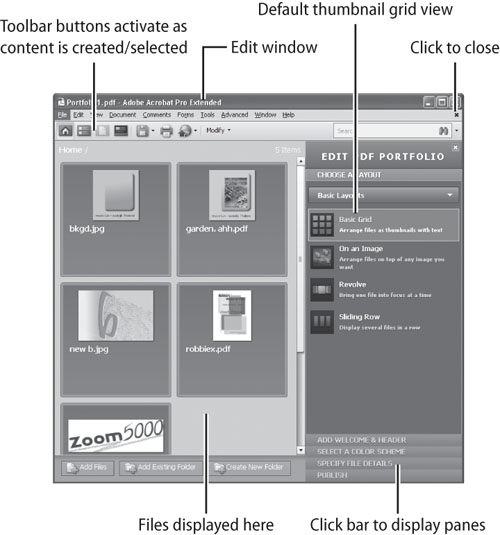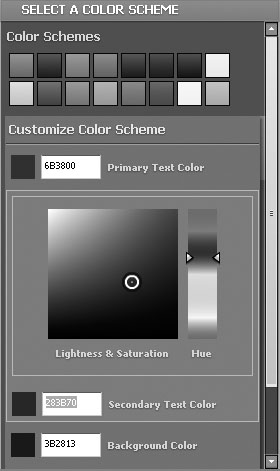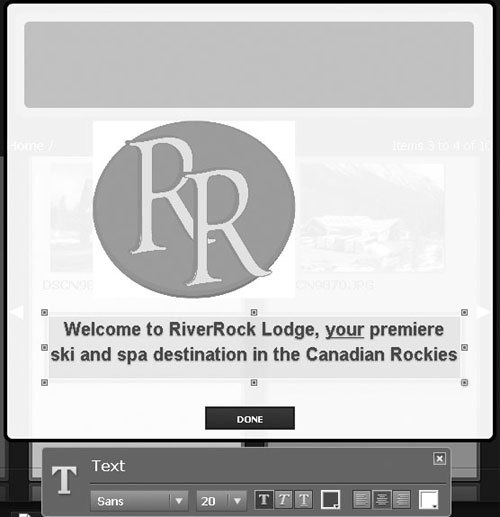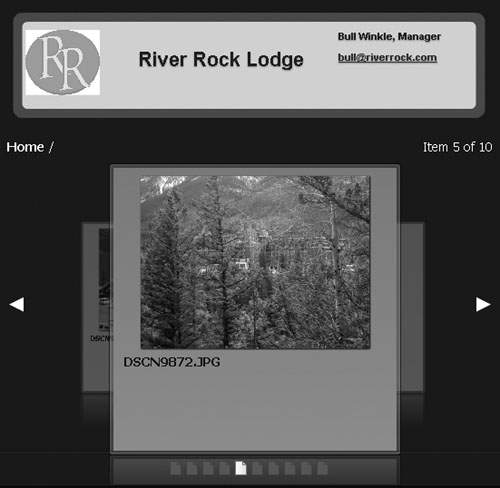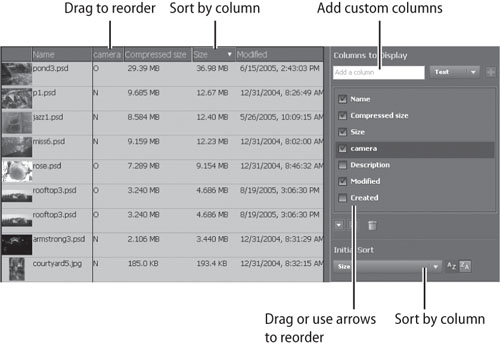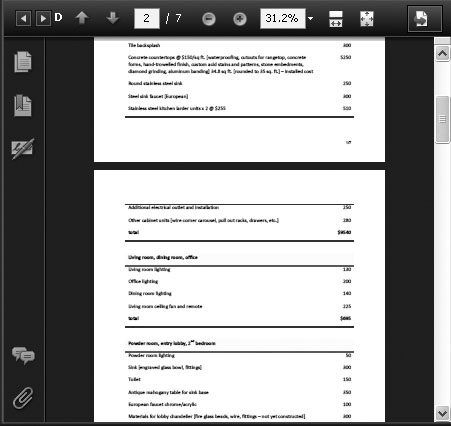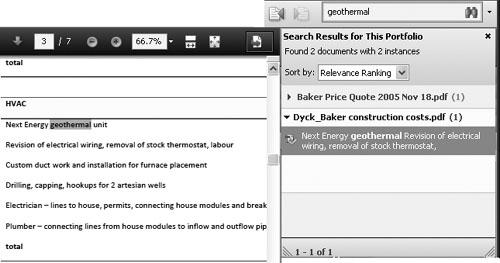Do you have to collect the correspondence for a contract negotiation? Or maybe you need to pull together material for a presentation to a potential customer? An Acrobat portfolio may fit the bill perfectly.
Acrobat 9 takes the idea of packages—the method used to bring together multiple PDF files within a parent file in Acrobat 8—to a new Flash-fed feature called Portfolio. In Acrobat 9 Portfolio, available in Acrobat 9 Standard and up, not only can you gather multiple files into a parent file, but you can also configure the interface used to present your files and explore other new features. For example, you can establish a folder hierarchy, search in a portfolio, apply program commands to the portfolio’s contents and the overall portfolio, and use both PDF and non-PDF files in the portfolio. Each file retains its own original features and elements, such as pagination, security, forms, digital signature, and default views.
Since Portfolio is a way to bring together content from different sources, and then manage and edit the component parts in different ways, this chapter includes dozens of references to specific topics mentioned elsewhere in the book.
Acrobat 9 offers two methods for combining multiple files. Instead of merging the content of a number of files into a single PDF file (described in #20, “Merging Multiple Files into a Single PDF Document”), you can use the Combine Files dialog to build a PDF portfolio.
A portfolio is a great way to bring all the material for a project or a task together, while maintaining the features of the component files and including navigation controls. Follow these steps to compile a basic portfolio:
Click the Combine task button and choose Assemble PDF Portfolio (Assemble Files into a Portfolio). Your Acrobat window is renamed the Portfolio[#].pdf window.
Click Add Files at the bottom left of the window to display the Add Files dialog. Locate and select the files you want to use, and click Open.
The dialog closes, and the selected files are listed at the left of the Edit window (Figure 25).
Select appearance and display options:
Select a layout from the Choose a Layout pane options at the right of the Portfolio window. The default uses a basic thumbnail grid (read about the other options in #26, “Customizing the Appearance”).
Click the Add Welcome & Header bar to display the Welcome Page and Header panes. (For more on designing the Welcome Page, skip ahead to #27, “Branding a PDF Portfolio.”)
Click the Select a Color Scheme bar to show some color scheme options, or design your own (see how that’s done in #26, “Customizing the Appearance”).
Click the Specify File Details bar to display the files in a list view; configure the list columns in Details mode using the options in the Specify File Details pane (read more in #28, “Organizing and Modifying Contents”).
Click Home
 on the toolbar to return to the original layout mode.
on the toolbar to return to the original layout mode.Click the Publish bar to display options for managing the PDF portfolio. You can save, e-mail, or share the portfolio (see Chapter 11, “Reviewing and Collaboration,” for information on sharing a portfolio on Acrobat.com).
Choose File > Save (File > Save Portfolio) from the Acrobat menu and save the portfolio file.
To close the portfolio and return to Acrobat, click the “X” at the upper right of the menu bar in the Portfolio window.
The finished package provides its own interface for controlling the view of the package and its contents. Read about the different views in the sidebar “The View’s the Thing.”
The Portfolio interface uses an SWF template, called the Navigator. Use the Navigator feature to enhance the portfolio’s appearance and functionality.
You can customize the appearance of a portfolio by configuring the layout and color. Start a portfolio as described in the previous technique, and select and add the files or folders you want to use.
Choose a layout. Select one of these options:
Basic Grid is the default view (shown in Figure 25) that arranges content based on a thumbnail grid.
The On an Image option displays your portfolio content with an image as the background. Click the thumbnails placed on the background image to display their contents. For details on building this layout, see the sidebar “Pick a Picture.”
Revolve presents the content as a sequence where one file comes into focus at a time, great for displaying images or other highly visual content. You can include a description on the pages; click page icons to navigate.
Sliding Row presents the content on a horizontal slider with the central three files in focus, ideal for displaying visual sequences of images and content that needs descriptions. Click page icons below the slider to navigate.
As you see in Figure 26a, the layouts are significantly different.
Select a color scheme. Click the Select a Color Scheme bar to display the default color schemes. Click Customize Color Scheme to open a list of the colors used in a scheme. Click an item (such as Background Color or Primary Text Color) to open a color picker that lets you choose a custom color (Figure 26b).
A PDF portfolio offers numerous ways in which to customize the display in accordance with your corporate or business requirements. You can construct a welcome page using different types of content, and insert a header that offers different text and image options. If branding is vital, use both a welcome page (as the initial introduction) and a header (to maintain your identity as the user navigates through the portfolio).
Tip
For more identity maintenance, add a background/watermark or header/footer to your component PDF files using the Acrobat menu. Read about using program commands in a portfolio in #29, “Applying Acrobat Commands”; check out #53, “Inserting Headers and Footers,” and #54, “Adding Watermarks and Backgrounds,” for particulars on using the document features.
A welcome page introduces your portfolio. In some cases, there’s no need to include an introduction. However, if you are designing a PDF brochure for your mountain resort, or want to include a list of instructions for participants in a shared portfolio, turn to a welcome page.
With your portfolio under way, follow these steps:
Click the Add Welcome & Header bar to display the pane. Click Welcome Page to open a list of options, including Text Only, Image Only, Image & Text, or Flash Movie content.
Choose an option to display the appropriate text or graphic frames on the preview area, and resize them as desired.
Insert text or an image in the frames accordingly:
To insert an image, click the image frame to open the Browse for Image dialog. Locate and select the image to display, and click Open. The image is inserted, the dialog closes, and the Image toolbar is activated. On the toolbar, select a background color, and set the Scale and Opacity values by dragging the sliders.
Click the Text field and type in your text. When you input text, the Text toolbar—which lets you specify font size, color, alignment, and background color—displays. If you want to use different font styles, such as the underline shown in Figure 27a, select the text on the text frame first.
Maintain your identity by using a header that displays at the top of your portfolio by following these steps:
Click the Add Welcome & Header bar to display the pane. Click Header to open a list of options, including text and image options.
Select the option for the text you want, such as an e-mail address or URL.
Insert an image if you’ve selected an image option; insert and configure text in the fields inserted on the page.
Click Home
 to return to the default mode, where you see your header displayed above the presentation content (Figure 27b).
to return to the default mode, where you see your header displayed above the presentation content (Figure 27b).
One important feature of Portfolio is the ability to arrange the files in logical and meaningful ways. You can coordinate the portfolio files using a folder system, organize and sort the file details, and view an individual file to manage its content.
Here are some tips for organizing your Portfolio component files:
If you import a folder, its contents—including any subfolders—are preserved in the portfolio.
You can’t select more than one folder at a time from the Browse for Folder dialog to add them to the portfolio. Either locate and select the parent folder (and then delete any subfolders you don’t want to maintain), or repeat the Browse for Folder process until you have the folders you want.
The folder hierarchy in a portfolio is shown as a breadcrumb menu (Figure 28a). In the example shown in the figure, there are three nested levels of folders from the Home mode.
Acrobat Portfolio lets you manage existing information about each component of the portfolio and add custom data. To check details, click the Specify File Details bar in the Edit pane. You’ll see the Columns to Display settings in the Edit pane, and the folders listed in Details mode (Figure 28b).
Keep these ideas in mind as you organize, sort, and rearrange columns and data:
You can choose the settings in the Edit pane, or directly on the list in Details mode. Changes made in one area automatically display in the other.
Drag the vertical separator between columns in Details mode to change a column’s width.
To sort the contents, choose a column name from the Initial Sort pop-up menu. You can sort by any of the active columns in Ascending
 or Descending
or Descending  order.
order.To add content or change values, such as a file’s name, click the label in Details mode and type the new value when the text is activated.
Select the check boxes for each column you want to display—deselect those you don’t want to use.
Custom columns can be configured and used in the same ways as the default columns; read how in the sidebar “Add Your Own Columns.”
Files added to a portfolio aren’t static. That is, you can open a file from the portfolio, make changes (such as Reader-enabling the file or adding a digital signature), and save the revised file. Some commands can be applied directly in the Portfolio window.
Opening files for editing. Although not every file type can be edited from within your portfolio, a great many file types can. Check out the sidebar “Update These Files...” for a list of formats.
Follow these steps to edit a PDF file:
Select the file to work with from the Home or List mode, and then click Preview
 on the Portfolio toolbar to display the files in the Preview Portfolio window (Figure 29).
on the Portfolio toolbar to display the files in the Preview Portfolio window (Figure 29).Click Open
 to display the file in Acrobat. You can access all the Acrobat menus and tools.
to display the file in Acrobat. You can access all the Acrobat menus and tools.Make your changes as necessary and save; the portfolio file is automatically updated.
Editing in portfolio. Some commands can be applied directly in the Portfolio window to a selected file or files, such as Reduce File Size, Run the PDF Optimizer, and others. Select the file or files in Home or List mode, and then choose the menu item. A sampling of the commands you can use in Portfolio are listed in the sidebar “Command Your Portfolio.”
The portfolio is a PDF file, and Acrobat offers some portfolio-specific commands. Here are a few:
From the Home mode, click Modify on the Portfolio toolbar and choose Secure Portfolio from the pop-up menu—or choose File > Modify PDF Portfolio > Secure Portfolio on the program menu—to specify restrictions and set a password. (See #119 for more information.)
From the Home mode, choose File > Export > Export Multiple Files to extract the component files of your portfolio in a selected file format. In the Export Multiple Files dialog, click Add Files > Add Open Files to specify the portfolio and click OK. In the Output Options dialog, select a target folder, specify a naming system, and choose an export format. Click OK to process the files. (See #34, “Exporting PDF Documents in Other Formats.”)
From any viewing mode, choose File > Portfolio Properties to open the Document Properties dialog, where you can add descriptions, specify security, and so on. (See #31, “Finding Information about Your Document.”)
From any viewing mode, select an imported movie file, and choose Modify > Convert to Flash Movie to change the file’s format. (See #96, “Inserting SWF in a PDF File.”)
Sometimes a portfolio can become very large, and it’s not always easy to keep track of your content. Fortunately, Acrobat offers a customized search feature for Portfolio that lets you search everything in your portfolio, including the information listed in Details mode, and in non-PDF files.
To search the files in a portfolio, follow these steps:
Type the terms in the Search field and click Search
 .
.You can set some criteria from the pop-up menu, including Whole Words Only and Case Sensitive. The Search Entire Portfolio option is selected by default, and can’t be deselected.
Review the returns shown in the Search Results dialog (Figure 30).
Click a return to read the file’s details. If you are in Details mode, the file is highlighted in the list; if you are in Preview mode, the result is highlighted on the page, as you see in Figure 30.
Click Previous
 or Next
or Next  to review the results.
to review the results.Close the Search Results pane when you have finished.

